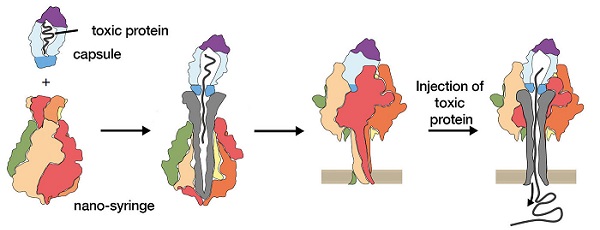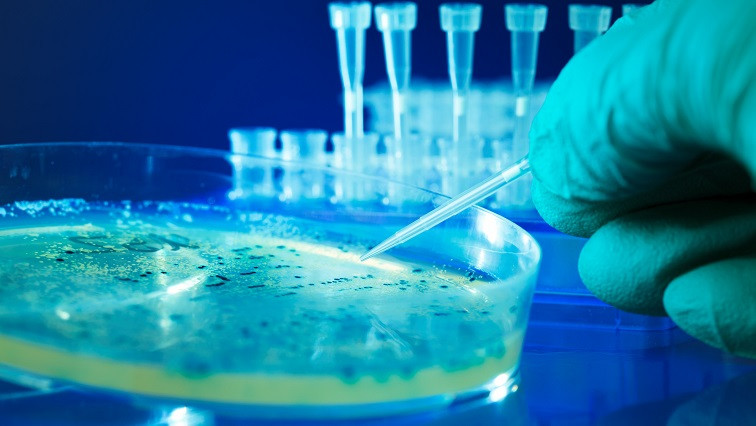Bacteria were the first life forms that emerged on Earth, and today, even our own bodies are home to a multitude of these microorganisms. Having them in our system can be a double-edged sword, for they may affect our bodies positively or negatively. In other words, they can work for us or against us. The first group is our friends, so we let them be and focus on the second group, our foes.
Recent studies have shown that some of those harmful bacteria use nano-syringes to inject toxins into the cells of their host. Obtaining this critical information, the researchers of the Max Planck Institute came up with the idea of replacing the toxins with drugs. Such a brilliant idea, isn’t it?
In their previous study, these researchers employed cryo-electron microscopy to examine bacteria’s syringe mechanism; in which they cooled down the samples to reach cryogenic temperatures, and observed them using special electron microscopes. They found that the bacteria attach to a cell and start forming a channel in its protective membrane, through which they inject a toxic protein into the center of the cell, poisoning and killing it within minutes in most cases.

Mechanism of toxin injection by the bacterial nano-syringe.
© MPI of Molecular Physiology
In their current study, the researchers explored possible ways of substituting drugs or beneficial proteins for bacteria’s toxic proteins and recognized that the following three requirements must first be fulfilled.
1- The proteins must be larger than 20 kilodaltons for remaining stable.
2- The proteins must be positively charged.
3- The proteins must not interact with the molecules of the “capsule” that holds the payload.
According to Stefan Raunser, the leading researcher of this study, they have taken the first step toward using these nano-syringes for delivering drugs into targeted body cells. This technique also holds the potential for revolutionizing cancer treatment in terms of minimizing drugs’ side effects, because the researchers believe that the nano-syringes can be designed to exclusively detect tumor cells, attach to them, and inject toxic proteins into them without harming healthy cells; but the million-dollar question is: How do the toxin molecules bind to the cell surface? That remains to be studied further.
The results of this study so far have been published in the journal Nature Communications.
Read the original article on Max-Planck-Gesellschaft.







